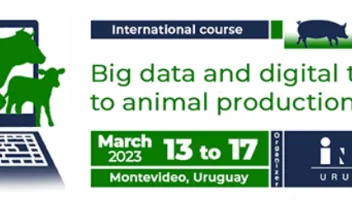
Instituto Nacional de Investigación Agropecuaria



ABSTRACT.- Forage nutrient contents are an important factor explaining the dry matter intake (DMI), average daily gain (ADG), and methane emissions (CH4) of ruminants fed indoors. However, for grazing animals, the forage nutrient contents might be limited in explaining such response variables. We aimed to verify the explanatory power of forage nutrient contents and sward structure on daily intake, performance, and CH4 emissions by sheep and beef cattle grazing different grassland types in southern Brazil.

Enteric methane (CH4) emissions from sheep contribute to global greenhouse gas emissions from livestock. However, as already available for dairy and beef cattle, empirical models are needed to predict CH4 emissions from sheep for accounting purposes.

Context:Average sward height has traditionally been used as a grazing management variable. However, such approach ignores the spatio-temporal heterogeneity of swards. Because the intake rate responds non-linearly to average height at plant level, we expected that sheep exposed to contrasting grazing methods with similar average heights would behave differently. Conclusions:Intake responses of sheep differed between grazing methods with similar average height due to sward heterogeneity over time and space.


Respondiendo a las demandas y oportunidades del sector, el proyecto apunta a capitalizar las sinergias entre ambos rubros y generar nuevos vínculos entre arroceros y ganaderos en clave de sistema.